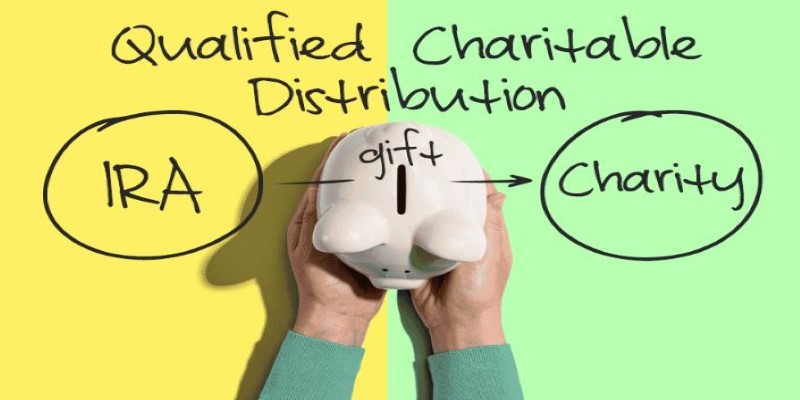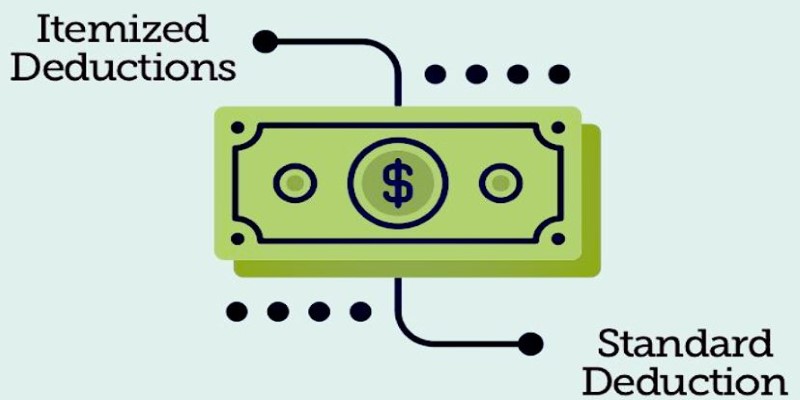Why Retirees Should Consider QCDs for Charitable Giving and Tax Reduction
Dec 11, 2024 By Verna Wesley
If youre nearing or already in retirement, you might be seeking ways to manage your income while reducing your tax burden. This is where a Qualified Charitable Distribution (QCD) comes into playa strategy that lets retirees donate directly from their Individual Retirement Account (IRA) to a qualified charity. Beyond supporting a cause you care about, a QCD offers the added advantage of lowering your taxable income. While the concept is simple, grasping the specific rules surrounding QCDs can help you maximize your tax benefits and make your charitable giving in retirement more rewarding.

In this article, we will explain what is known as a Qualified Charitable Distribution, how it works, and why it might be the most effective tax-saving device yet. Whether you seek to minimize your Required Minimum Distributions or you want to take some extra steps in enhancing your charitable contributions, this information in the guide proves essential for every need.
What is a Qualified Charitable Distribution (QCD)?
A Qualified Charitable Distribution, or QCD, allows IRA owners aged 70 or older to donate directly from their IRA to a charity without counting the distribution as taxable income. Essentially, the donation goes straight from your IRA to the charity, allowing you to bypass the usual income tax that would apply if you withdrew the funds yourself. This can be particularly beneficial for those who dont itemize deductions on their taxes, as the QCD provides a way to benefit from charitable giving without having to take the standard deduction.
QCDs are super popular among retirees in acquiring control of their taxable income. Because of age 72 and the starting RMD, a QCD is an optimal opportunity to cover those needs without getting the likely disastrous tax blow that might accrue from RMDs. This way, you could use that money towards a cause for charity to fulfill all or part of your RMD for the year, tax-free to you.
 How Does a QCD Lower Your Taxes?
How Does a QCD Lower Your Taxes?
A Qualified Charitable Distribution (QCD) can significantly lower your taxes by reducing your taxable income. Heres how it works:
When you make a QCD, the distribution isn't included in your Adjusted Gross Income (AGI). Usually, any distribution from a traditional IRA counts as income and can, therefore, be added to one's AGI. This can nudge you into a higher tax bracket and even affect other things in your tax situation, like how Social Security is taxed or even Medicare premiums that you might pay. However, a QCD is not part of your AGI, which would decrease your taxable income and potentially lower your tax burden as well.
Additionally, QCDs help you manage Required Minimum Distributions (RMDs). At age 72, you are required to start taking distributions from your IRA, and these are taxable. If you dont need or want the extra income, a QCD allows you to fulfill your RMD requirement without triggering the usual tax consequences. For example, if your IRAs RMD is $10,000 and you dont need the income, you can make a $10,000 QCD to a qualified charity. This satisfies your RMD while keeping your taxable income the same, preventing an unnecessary tax increase.
By using QCDs, you can reduce your AGI, potentially avoid higher taxes, and still meet your RMD obligationsall while supporting charitable causes you care about. Its a smart tax strategy for retirees seeking to minimize their tax liability.
Eligibility and Rules for Qualified Charitable Distributions
QCDs come with a few key eligibility requirements and rules to keep in mind:
Age Requirement: You must be at least 70 years old to make a QCD, though RMDs start at 72. You can begin QCDs earlier than the RMD age to lower taxable income without triggering taxes.
Eligible Accounts: QCDs can only be made from traditional IRAs or inactive SEP/SIMPLE IRAs. Roth IRAs and active employer retirement plans like 401(k)s are ineligible.
Charitable Organization Requirements: The charity must be a qualified 501(c)(3) organization. Donor-advised funds and private foundations cannot receive QCDs, ensuring the donation benefits public charities.
Annual Limit: The annual QCD limit is $100,000 per individual. Married couples can each contribute $100,000 from their IRAs, potentially doubling the donation amount.
Direct Transfer Requirement: The donation must be directly transferred from the IRA to the charity. If the distribution passes through you first, it becomes taxable. Always arrange for a direct transfer through your IRA custodian.
Why QCDs are Especially Useful for Non-Itemizers
Traditionally, charitable donations benefited those who itemized deductions, allowing them to write off contributions. However, as the standard deduction has increased, fewer people itemize, preventing many taxpayers from claiming these deductions. For individuals who take the standard deduction, Qualified Charitable Distributions (QCDs) provide a similar advantage by directly lowering taxable income. This makes QCDs an attractive option for retirees who want to support charities while still gaining tax benefits without the need to itemize.

For instance, if your RMD is $5,000 and you dont want to itemize deductions, you can make a QCD of $5,000, fulfill your RMD requirement, and keep your taxable income lower than if you had simply taken the RMD as a distribution. In this way, QCDs create a path for non-itemizers to enjoy the tax advantage of giving without having to meet itemization thresholds.
Conclusion
Qualified Charitable Distributions (QCDs) provide retirees with an effective way to lower their tax liability while supporting charitable causes. By making direct, tax-free donations from an IRA, QCDs help meet Required Minimum Distributions (RMDs) without increasing taxable income, benefiting even non-itemizers. Whether you're aiming to reduce taxes or enhance charitable giving, QCDs can be a valuable strategy. Consult with a financial advisor to see how QCDs fit into your retirement plan and begin reaping the financial and philanthropic rewards of this tax-saving tool.








